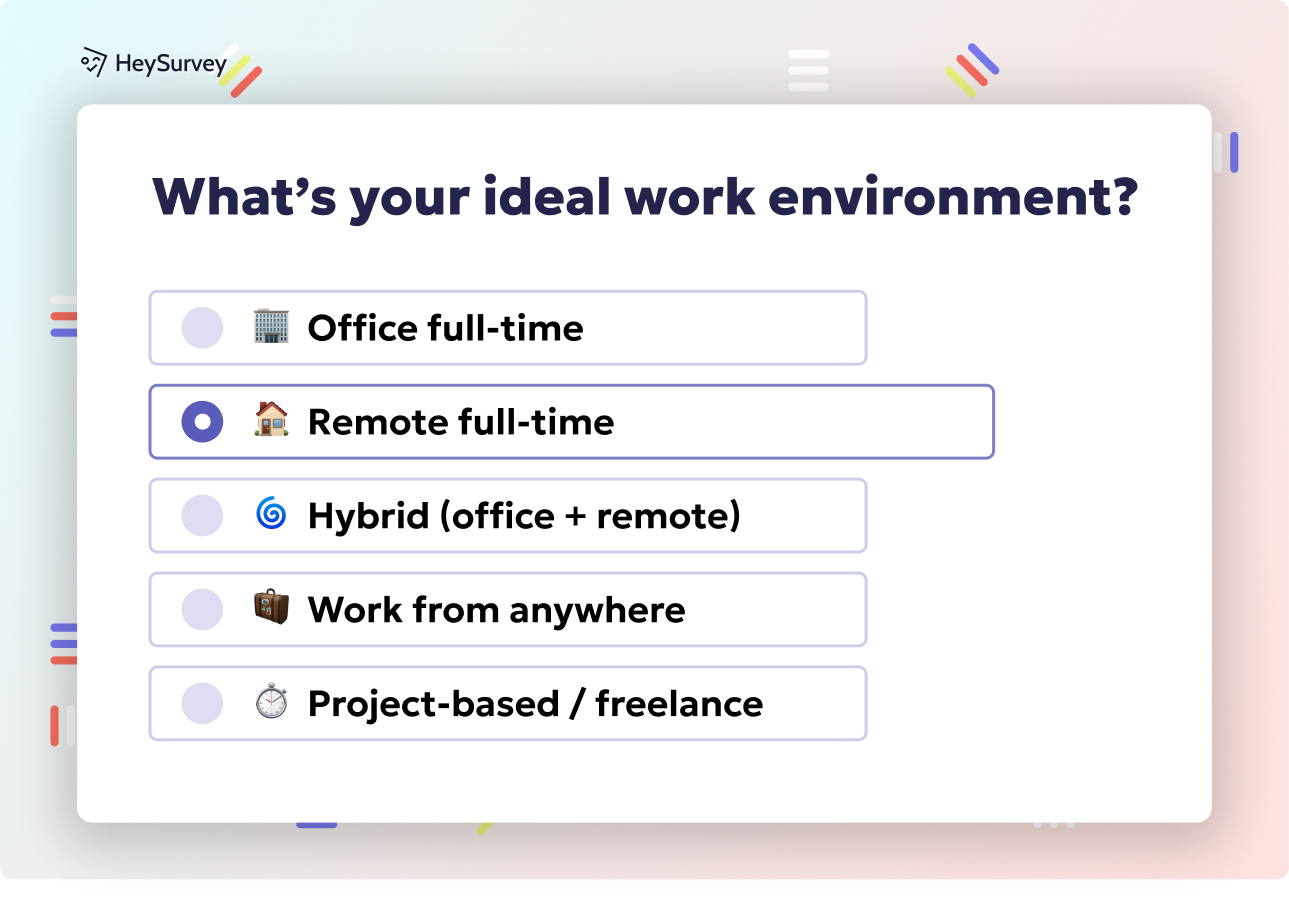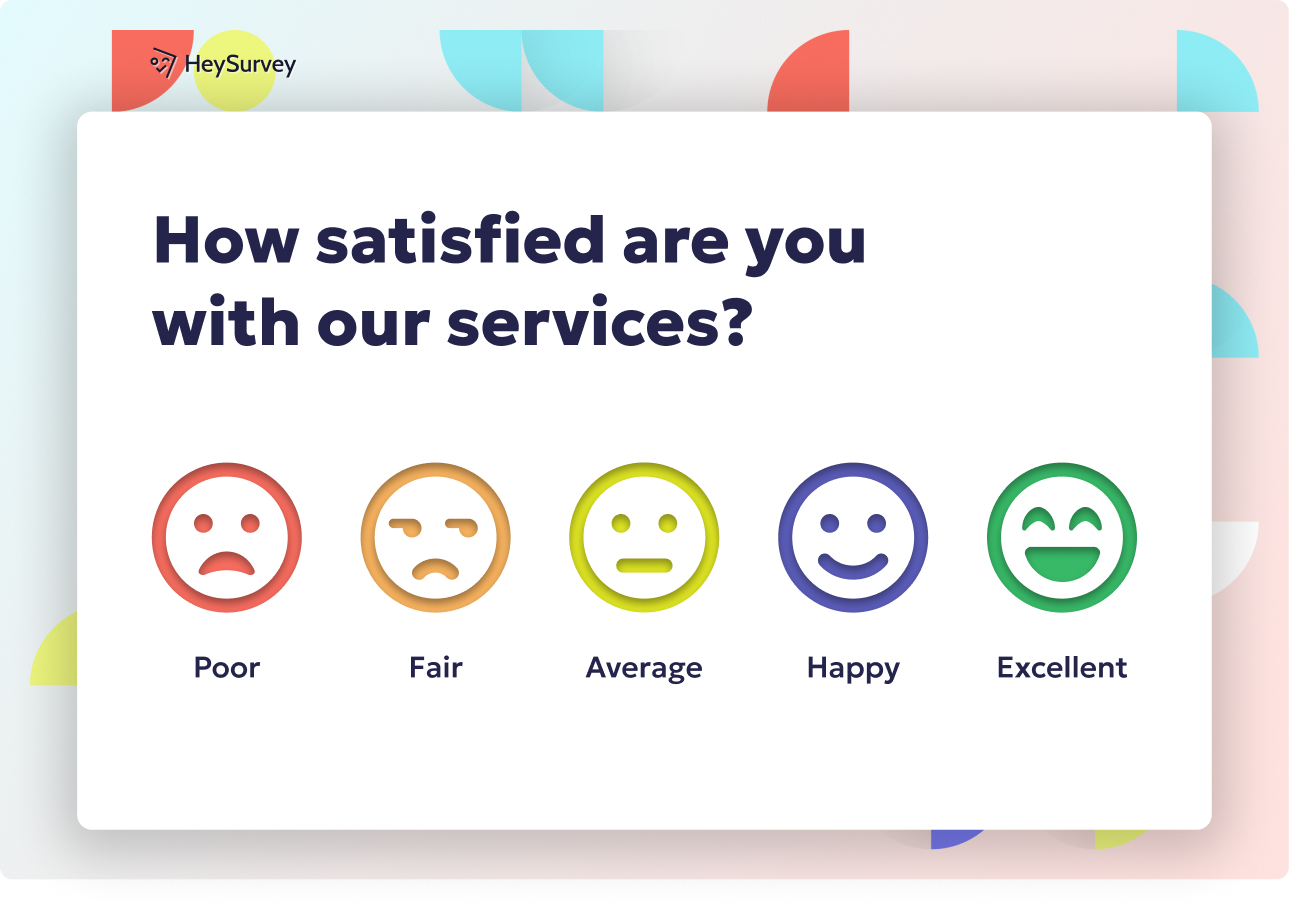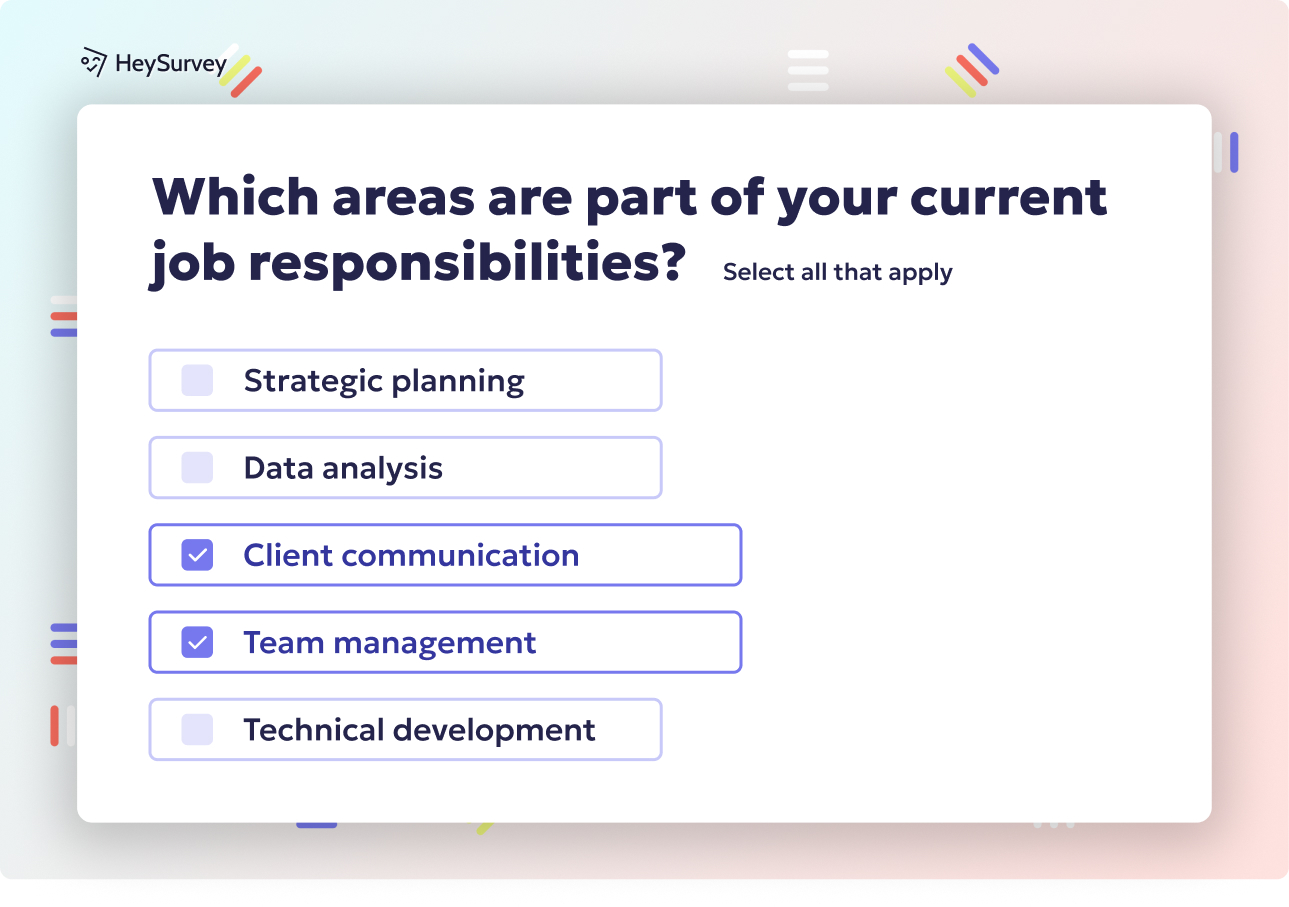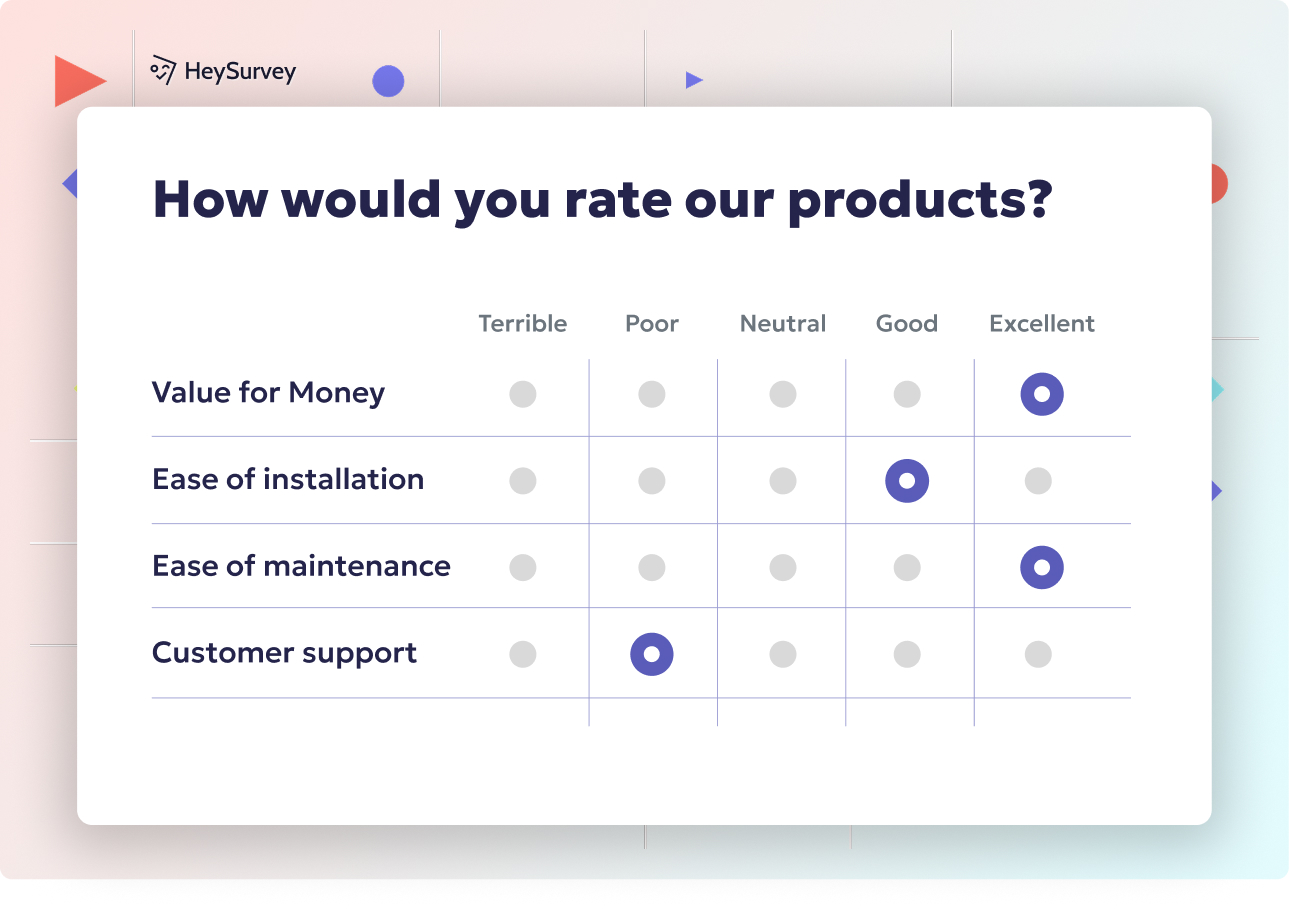31 Essential IT Help Desk Survey Questions for Better Support
Discover 25+ expert IT help desk survey questions covering post-ticket, onboarding, incident follow-up, self-service, and quarterly pulse insights.
IT help-desk surveys are like secret decoder rings for deciphering your team's real tech support experience. These bite-sized feedback forms play a pivotal role in the ITIL and ITSM landscapes, channeling the voice of the end-user right into the hands of help-desk leads and IT managers. Whether it’s slashing ticket backlogs, boosting first-call fix rates, or simply giving employees a platform for “real talk,” IT help-desk surveys are the unsung heroes of workplace happiness. You’ll get the scoop here on key survey moments, from post-ticket closure to self-service popups, with actionable templates, expert timing advice, and plug-and-play questions that keep you covered from onboarding to outages.
Post-Ticket Closure Survey
Why & When to Use
Spinning up a survey immediately after a ticket wraps up is the gold standard for IT support CSAT. This type of survey not only ensures each support interaction is accounted for, but it also surfaces the velocity of your help-desk’s “fix-it” factor. When you launch a service desk resolution feedback request quickly, users are more likely to recall their experience with vivid detail—warts, praise, and all.
Deploying a post-ticket closure survey means you can instantly catch patterns in technician professionalism, gauge if your speed is up to snuff, and track core metrics like Customer Satisfaction Score (CSAT) or the Customer Effort Score (CES). These insights will keep those sneaky repeat tickets from ever piling up.
Surveys work best when they arrive while the memory’s fresh. Send the survey within 1–2 hours of ticket closure and make it a sprint, not a marathon—keep it under 60 seconds so users can respond in their coffee break.
What to Write
Here are rock-solid sample questions for your ticket-closure survey:
- On a scale of 1–5, how satisfied were you with the resolution of your IT support ticket?
- Did the technician clearly explain what was done to resolve your issue? (Yes/No)
- How would you rate the speed of the response and resolution?
- Was your issue resolved on the first attempt? (Yes/No)
- Is there anything else you’d like us to know about this support experience? (Open text)
- How likely are you to use the IT help desk again based on this interaction? (Scale)
- Did you encounter any difficulties during the support process? (Open text)
Key pointers for post-ticket surveys:
- Stick to direct, jargon-free language
- Mix in rating, yes/no, and open-text questions
- Space out questions visually for readability
- Follow through quickly on any negative responses
Sending IT help desk surveys within 24 hours of ticket closure significantly increases response rates and provides more accurate feedback. (growett.com)

Creating your IT help-desk survey with HeySurvey is quick and straightforward—even if you’re brand new to the platform. Follow these 3 easy steps to get your survey live and collecting valuable feedback right away.
Step 1: Create a New Survey
- Head to HeySurvey’s homepage and click “Create Survey”.
- Choose your preferred method: start with an empty sheet for full customization, or pick a pre-built template that fits your IT help-desk survey needs.
- Give your survey an internal name for easy tracking later, like “Post-Ticket Closure Feedback.”
Step 2: Add Questions
- Click “Add Question” at the top or between questions to build your survey content.
- Select question types relevant to your needs: rating scales, yes/no, open text, and more.
- Write clear, friendly questions (try those sample questions from the article to save time!).
- Mark must-answer questions as required to ensure you gather all critical info.
- Use branching if you want to guide respondents to different questions based on their answers.
Step 3: Publish Your Survey
- Preview your survey by clicking the “Preview” button to check the flow and design.
- Once happy, hit “Publish”—you’ll need to create a free account if you haven’t already.
- Grab the survey link to share or embed it in emails, intranet portals, or your help desk platform.
Bonus Step 1: Apply Branding
- Open the Designer Sidebar to upload your company logo and customize colors, fonts, and backgrounds.
- Match your survey’s look and feel to your IT brand for a polished, professional touch.
Bonus Step 2: Define Settings
- Access the Settings Panel to:
- Schedule when your survey is available with start/end dates
- Limit the total number of responses if needed
- Set a redirect URL after survey completion for seamless next steps
- Allow respondents to view aggregate results if that fits your transparency goals
- Schedule when your survey is available with start/end dates
Bonus Step 3: Skip Into Branches
- Use HeySurvey’s branching option to create personalized survey paths.
- For example, if a user answers “No” to “Was your issue resolved?”, you can skip them to a question about what went wrong.
- This keeps the survey relevant and respondent-friendly, reducing drop-offs and increasing quality feedback.
Ready to jump in? Use the button below to start with a pre-made IT help-desk survey template and customize it to your exact needs—faster than you can say “ticket closed.”
Incident Follow-Up Survey (High-Severity/Complex Issues)
Why & When to Use
After a fire is put out—think P1 IT outage feedback or major incident review—it’s vital to double back and ask users how well things really went. By sending a targeted survey 1 to 3 days post-resolution, you’ll dig into how your team handled stress, shared updates, and strategized for the long haul. This isn’t just about the fix, but about the journey: how well you communicated, if updates made sense, and whether deep-dive prevention felt credible.
For major incidents, conditional logic saves everyone’s time. Only send this survey if the issue, say, brought business to a screeching halt for over thirty minutes. You’ll collect high-value data, not noise.
What to Write
Channel the right analytics with questions like these for major incident follow-up:
- Were you kept informed about the progress of the incident at regular intervals? (Yes/No)
- How clearly did the IT team explain the incident’s root cause?
- On a scale of 1–5, how confident are you in the steps taken to prevent a repeat incident?
- Did you experience any business impact as a result of this incident? Please describe.
- Was the incident resolved within the communicated timeframe? (Yes/No)
- How would you describe the professionalism of the IT team during this incident?
- Was there anything the IT team could have done better in managing this incident? (Open text)
Best practices for incident follow-up:
- Wait at least 24 hours to allow reflection
- Use conditional logic to trigger only for severe events
- Pair responses with incident retrospect outcomes
- Close the loop with personal follow-ups if feedback is critical
Effective IT help desk surveys should include concise, unbiased questions aligned with clear objectives to gather actionable feedback. (adviseblue.com)
IT Service Onboarding Survey
Why & When to Use
The “first impression” magic of new hires can fizzle if their mouse won’t click or their login bounces. That’s why IT onboarding satisfaction is a make-or-break metric for both HR and tech teams. After 7 to 14 days, a new-hire tech setup survey checks whether laptops, software, and system access arrived on cue—and if the instructions actually made sense.
This input not only reveals gaps in your onboarding machinery but arms you with data to boost onboarding KPIs like time-to-productivity. Seamless IT onboarding means staffers get to “wow” faster, with fewer password blues or conference-call flubs.
What to Write
For a well-rounded onboarding feedback survey, try asking:
- Was all your required IT equipment delivered before your first day? (Yes/No)
- How would you rate the setup and clarity of your company email, calendar, and collaboration tools?
- Did you experience any technical difficulties accessing your main work applications?
- On a scale of 1–5, how satisfied are you with the instructions provided for your IT setup?
- Did you know how to reach IT support in case of issues during your first week? (Yes/No)
- What could make your IT onboarding experience better? (Open text)
Effective IT onboarding surveys:
- Deploy between days 7 and 14
- Pair responses with key onboarding metrics
- Keep tone upbeat and questions stress-free
- Ping HR if negative trends persist
Self-Service Portal Feedback Survey
Why & When to Use
Self-service is the holy grail for busy users and overloaded tech teams. Hence, a nimble IT self-service portal survey is your best route to scaling support while deflecting tickets. Deploy feedback requests after users complete a self-service workflow or search the portal—right at the point of action, while memories are clear.
By focusing on deflection feedback, you’ll get actionable commentary on portal ease, article quality, and missed answers. Slide-outs or exit pops work best, gently collecting input without derailing productivity.
What to Write
Consider these self-service survey questions:
- Did you find what you were looking for in the self-service portal? (Yes/No)
- How easy was it to navigate to the information you needed? (Scale: Very Easy to Very Difficult)
- Were the search results or articles helpful in resolving your issue?
- Did you need to contact IT support after using the portal? (Yes/No)
- On a scale of 1–5, how would you rate the clarity of instructions provided?
- Was there information you expected to find but didn’t? (Open text)
- How could we improve your self-service experience?
Tips for running these surveys:
- Pop up on exit or after a completed workflow
- Prioritize a single fast question, with optional follow-up
- Tag negative responses for content review
- Use results to streamline portal design and content
Research indicates that implementing short, periodic surveys with fewer than 10 questions can achieve a 75% response rate, enhancing the effectiveness of self-service portals. (moldstud.com)
Knowledge Base Article Feedback Survey
Why & When to Use
Every time a user scrolls to the bottom of a troubleshooting guide, they're given a chance to shape your content. A well-placed IT knowledge base survey helps you crowdsource what’s working (and what’s not) in article helpfulness and accuracy. These “micro-moment” surveys prompt users to quickly rate clarity, completeness, and usefulness.
Embedding these surveys at the end of each article lets people contribute without breaking stride, while aggregating low-rating feedback steers your weekly content refresh.
What to Write
Use these questions for embedded knowledge base surveys:
- Was this article helpful? (Thumbs Up/Down)
- Did you find the solution you needed in this article? (Yes/No)
- Was any information unclear or missing? (Open text)
- How easy was it to follow the steps described? (Scale: Very Easy to Very Difficult)
- What would improve this article? (Open text)
Tips for knowledge base surveys:
- Keep surveys ultra-short and visible
- Aggregate and review low-rated articles weekly
- Focus on clarity, completeness, and tone
- Invite users to suggest new articles in open-text fields
Quarterly IT Help-Desk Pulse Survey
Why & When to Use
A quarterly IT support NPS pulse check is your wide-angle lens. Unlike transactional feedback, it sniffs out big-picture trends, catching early shifts in team employee sentiment or gripes about policies, response speed, and tool usability. Every 90 days, cast a wider net and invite users to rate the state of your IT support life.
This pulse complements daily or incident surveys. It helps you detect whether one department feels neglected, or if MacBook users consistently trip over VPN tools. Here’s your roadmap to recurring improvement.
What to Write
Sample questions for your quarterly IT help-desk survey:
- On a scale of 1–5, how satisfied are you with overall IT support responsiveness?
- How would you rate the usability of primary IT tools and resources?
- Do IT policies feel clear and consistent across the company?
- On a scale of 1–10, how likely are you to recommend IT support to colleagues? (NPS)
- How easy is it to resolve tech issues without reaching out to support?
- Did you encounter recurring issues that remain unaddressed over the past quarter?
- How would you rate the helpfulness of IT communications and updates?
- Please share any suggestions for improving our IT support experience. (Open text)
Pulse survey best practices:
- Slice results by department, location, device, etc.
- Deploy every 90 days for clear benchmarking
- Pair with transactional metrics for holistic insight
- Act on themes rather than one-offs
Best Practices: Dos & Don’ts for IT Help-Desk Surveys
Dos: Making Feedback Count
Creating a winning feedback loop hinges on a few savvy moves. Here’s what should top your checklist:
- Keep surveys concise—10 questions max is your friend
- Act on feedback within 30 days to keep trust high
- Mix in rating scales, yes/no, and open comments for flexibility
- Always communicate survey purpose upfront
- Tune the language for the audience, skipping jargon
- Rotate or refresh questions to beat feedback fatigue
- Respect privacy—state if surveys are anonymous or tracked
Don’ts: Common Pitfalls to Dodge
There are a few missteps you’ll want to steer clear of:
- Don’t swamp users with multiple surveys after the same ticket
- Avoid technical jargon—plain language wins every time
- Never send surveys for tickets that are unresolved or only “partially” closed
- Don’t ignore feedback—silent inboxes erode credibility
- Avoid unnecessarily repetitive questions
- Don’t let negative feedback go unaddressed
- Don’t ever collect personal data you don’t absolutely need—compliance is king
Remember to clock GDPR and PII needs every time—clearly spell out how data is handled and whether responses are traced back to individuals. Getting this right builds trust and honest replies.
Tempted? Try rolling out one of these survey styles this week, and measure not just who clicks, but who shares something genuinely helpful. Your response rates—and IT karma—will thank you.
Conclusion
The right IT help-desk survey converts user voices into actionable change for support teams everywhere. From lightning-fast post-ticket check-ins to quarterly pulse snapshots, these templates keep feedback flowing and improvements moving. Always keep surveys short, genuine, and acted upon. Let your data inspire, not intimidate. Start with just one survey this week, and watch your help-desk culture transform.
Related IT Survey Surveys

40+ Technology Survey Questions: Types, Use-Cases & Best Practices
Explore 40+ technology survey questions with sample templates, use-cases, and best practices to b...

31 Power BI Survey Questions: Types, Samples & Best Practices
Discover 30+ Power BI survey questions covering adoption, features, training, performance, securi...

29 Post Implementation Survey Questions to Boost Success
Explore essential post implementation survey questions with 30 sample questions to boost user sat...

